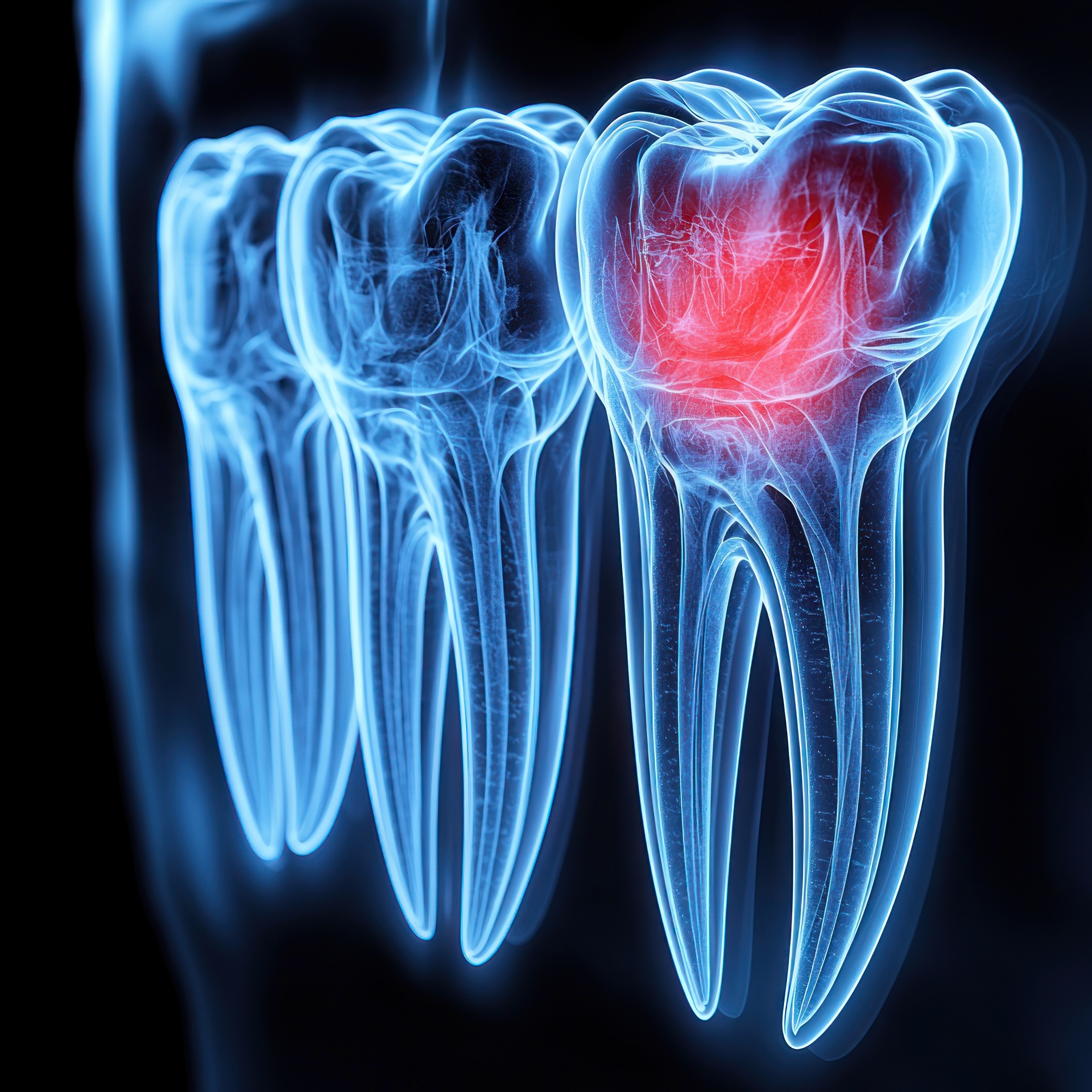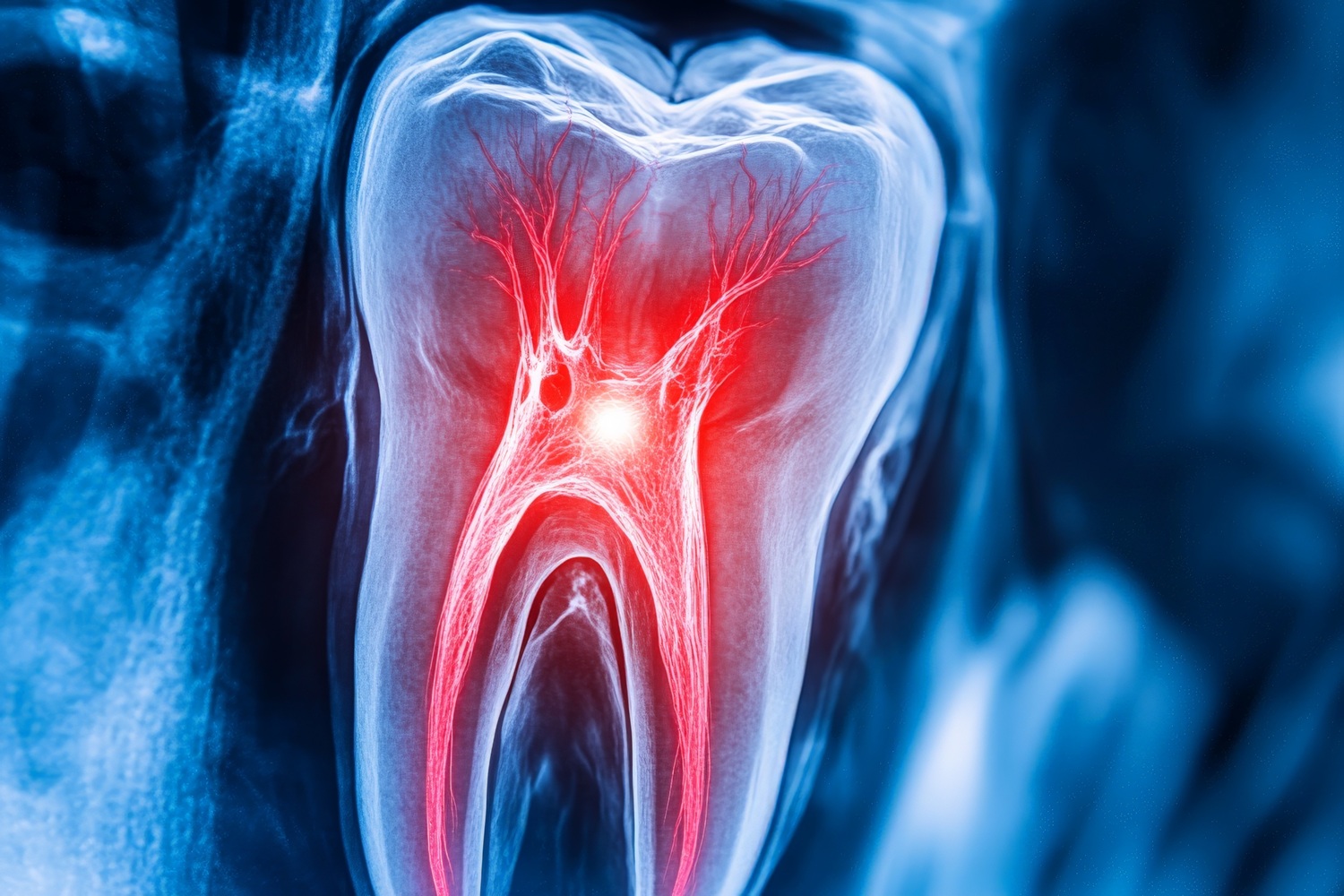
Root Canal TherapyIn Laguna Niguel, CA
What Is Root Canal Treatment?
Root canal therapy is a common dental procedure designed to save a tooth that is infected, decayed, or damaged by injury. Inside every tooth is a soft tissue called the dental pulp, which contains nerves and blood vessels.
When the pulp becomes inflamed or infected-often due to deep decay, cracks and trauma-it can lead to pain, sensitivity, swelling, or changes in tooth color. During root canal treatment, the inflamed or infected pulp is carefully removed. The inside of the tooth is then cleaned, disinfected, and sealed to prevent further infection. This procedure relieves pain, restores normal chewing function, and allows you to preserve your natural tooth and smile.

The Benefits of Root Canal Therapy

Relieve Tooth Pain
Root canal therapy gently eliminates tooth pain by removing the infected or decayed pulp – the source of discomfort. Once the pulp is removed, the tooth is carefully cleaned, filled, and restored, bringing lasting relief and protecting your natural smile.

Stop The Spread Of Infection
Root canal therapy removes the infected pulp and seals your tooth, stopping the infection from worsening and protecting the surrounding bone and gum tissue. This treatment not only safeguards your oral health but also helps preserve your natural tooth.

Preserve Your Oral Health
By saving your natural tooth, root canal therapy prevents the need for extraction and supports long-term oral health. Keeping your tooth intact maintains proper chewing function, protects the alignment of surrounding teeth, and helps you preserve a confident, healthy smile.
The Root Canal Treatment Process
Step 1: Consultation and Preparation
Before beginning treatment, Dr. Gharavi will complete a thorough clinical examination and review diagnostic imaging, such as X-rays, to determine the cause of your tooth pain. Our office also has an in-office CBCT machine for advanced 3D imaging, providing a detailed view of your tooth and surrounding structures. Based on these findings, Dr. Gharavi will explain whether root canal therapy is the most effective option and review all available treatment choices with you, so you can make an informed decision about your care. If endodontic treatment is recommended, an individualized care plan will be discussed with you in detail to ensure your treatment aligns with your needs and preferences. If you choose to proceed with treatment, the area will be numbed with local anesthetic to maximize comfort. For patients who feel anxious, sedation options and nitrous oxide (laughing gas) can also be discussed at your consultation to help make the experience as stress-free as possible.
Step 2: Cleaning and Disinfection
Dr. Gharavi will place a rubber dam, a small plastic shield, to isolate your tooth. This helps maintain a clean working area and protects the rest of your mouth during the procedure. The diseased or inflamed pulp (nerve tissue) inside the tooth will be carefully removed. Dr. Gharavi will then clean and disinfect the canals using specialized instruments, along with advanced laser treatment, to remove bacteria and irritants as effectively as possible.
Step 3: Filling and Sealing
Once your tooth has been thoroughly cleaned and disinfected, the root canals will be filled with a safe, biocompatible material that helps support the tooth and promotes healing. After the canals are filled, a temporary restoration will be placed to protect the tooth until your follow-up visit with your general dentist, who will place a permanent restoration. This follow-up is important to ensure the long-term strength and function of your tooth.
sedation options
FAQs
Frequently Asked Questions
Check out these frequently asked questions, or call us to speak with our team.
Root canal therapy is needed when the pulp, the soft tissue inside your tooth, becomes inflamed or infected and can no longer heal on its own. This often occurs when a deep cavity reaches the pulp and allows bacteria to enter, or when dental trauma disrupts the pulp’s blood supply or exposes it to the oral environment. If left untreated, the condition can progress to tissue breakdown and necrosis of the pulp. As this happens, you may begin to notice symptoms such as toothache, gum tenderness, or sensitivity to temperature and pressure.
A root canal is typically necessary when the pulp—the soft tissue inside the tooth containing nerves and blood vessels—becomes inflamed or infected. This can occur due to deep decay, repeated dental procedures on the tooth, or a crack or chip in the tooth.
Common signs that may indicate the need for a root canal include:
- Persistent tooth pain, especially when chewing or applying pressure
- Prolonged sensitivity to hot or cold temperatures, even after the stimulus is removed
- Swelling or tenderness in the gums near the affected tooth
- A small, pimple-like bump (abscess) on the gums
- Darkening or discoloration of the tooth
If you are experiencing any of these symptoms, it is important to contact Dr. Gharavi at Laguna Niguel Endodontics to determine the most appropriate treatment and protect your oral health.
No. Although it’s a common myth that root canal therapy is painful, it is actually the inflammation or infection inside the tooth that causes discomfort. With today’s advanced techniques and technology, root canal treatment is designed to be a comfortable experience while relieving pain. Our goal is to ensure profound anesthesia and patient comfort prior to starting treatment. If you feel that you may benefit from sedation services, we can discuss those options with you at your consultation appointment.
While crowns are generally the best way to protect your tooth after a root canal, and are always the recommendation for your posterior teeth, they are not always necessary. If there is enough enamel left on front teeth that have gotten a root canal, a filling may be used instead of a crown.
.avif)
